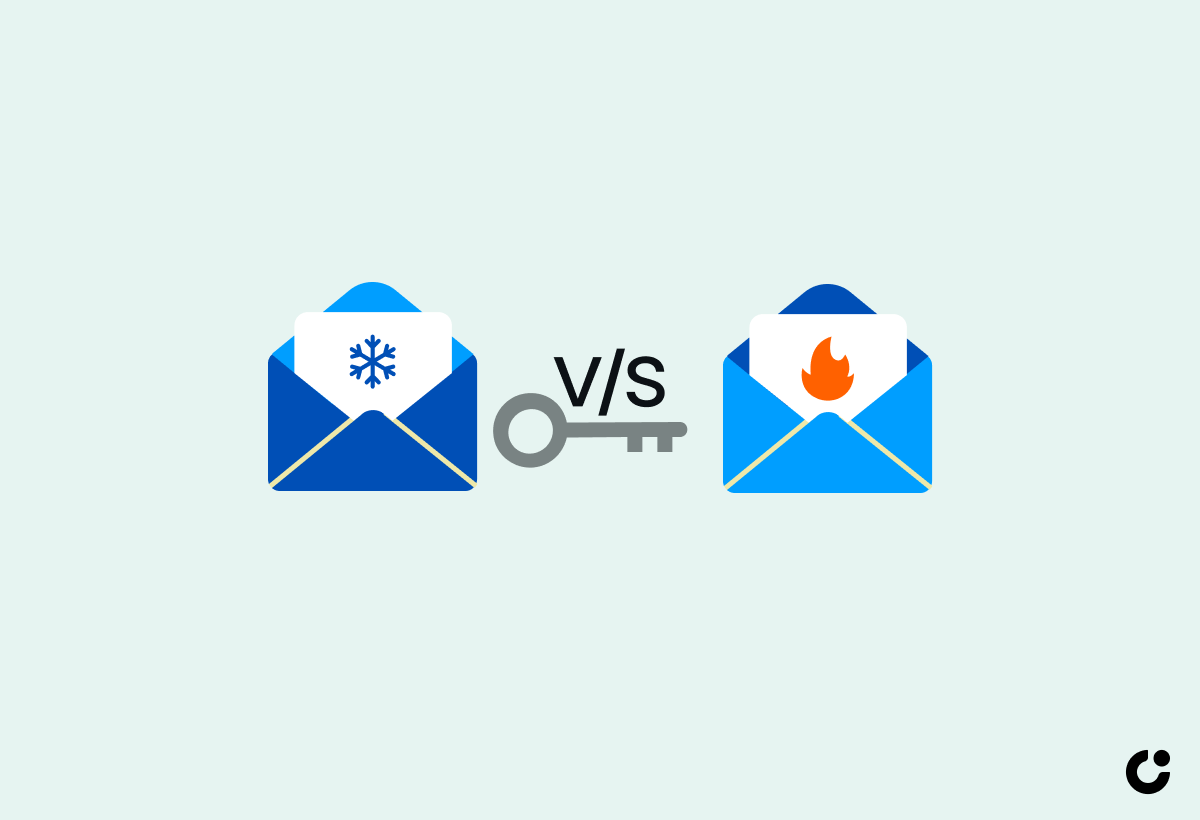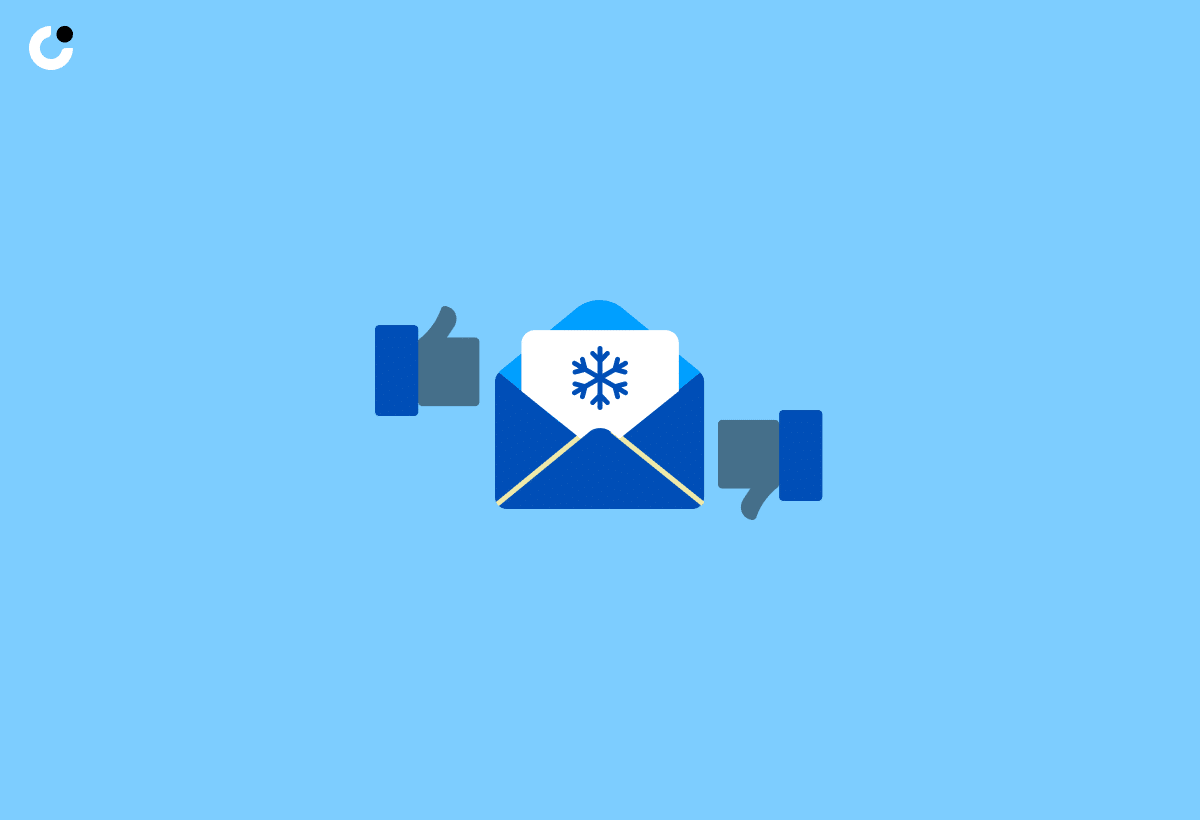Imagine navigating the vast landscape of email marketing, searching for the most effective strategy to reach potential customers and nurture existing relationships. The choice between “cold email vs warm email” approaches can be a complex one. In this journey, we will uncover the essential aspects of cold and warm emails, their advantages and disadvantages, and how to craft compelling content while adhering to legal regulations. Let’s embark on this exciting adventure to unlock the full potential of your “cold email vs warm email” marketing strategy.
Key Takeaways
- Cold emails focus on establishing new relationships while warm emails are tailored to existing customers or those who have previously shown an interest.
- Both cold and warm email strategies offer advantages, but require careful consideration of their drawbacks for successful implementation.
- Combining both strategies can be highly effective in attracting and converting customers through AI personalization.
Defining Cold Emails

Cold emails are unsolicited messages sent to potential clients or contacts with no prior relationship, primarily used for prospecting and lead generation. These emails serve as a first point of contact and require meticulous planning, precise targeting, and adherence to best practices to avoid potential errors.
When sending warm and cold emails, factors to consider include personalization, relevance, crafting compelling subject lines, and creating content that will capture the recipient’s attention. Developing effective cold emails demands a focus on engaging content, respect for the recipient’s inbox, and a strong emphasis on value delivery.
Defining Warm Emails

Warm emails, on the other hand, are sent to individuals with an existing relationship or connection, often used to nurture relationships, provide value, and increase engagement. These emails are more effective in email marketing than cold emails and can significantly boost engagement while fostering long-term relationships with the audience. Personalization, relevance, strong subject lines, and captivating content are recommended practices for warm emails.
Warm emails, due to their tailored approach that acknowledges past interactions and caters to individual needs and interests, can efficiently transition potential customers into regular clients, enhance engagement, and build enduring relationships with the audience through a well-executed warm email campaign.
Key Differences Between Cold and Warm Emails

The main distinction between cold and warm emails lies in the level of trust and relationship, purpose, and response expectations, with warm and cold email strategies generally yielding different response rates. Warm emails are sent to individuals who have shown interest or are already frequent customers, while cold emails target unfamiliar recipients. Cold emails primarily focus on establishing new relationships, generating leads, or presenting a product or service, whereas warm emails aim to foster existing relationships or engage in subsequent communication.
Warm emails typically have higher open and reply rates than cold emails, as they are sent to individuals who have previously indicated an interest or are existing customers. Also, the ability to tailor warm emails to individual interests or needs heightens their effectiveness.
Advantages and Disadvantages of Cold Emails

Cold emails offer several advantages, such as:
- the ability to test different content, headlines, and calls to action to measure the best response from your audience
- connecting you with new customers outside of your current clientele
- generating leads
- launching new products or services
- making initial contact with potential clients
For effective cold emailing, creating and maintaining an accurate email list devoid of incorrect or inactive addresses is paramount.
However, there are also drawbacks to cold emails, including:
- Low open rates
- Lack of personalization
- Possibility of being labeled as spam
- Purchasing email lists may result in low response rates
- Lengthy emails may be less effective than brief ones
Evaluating the advantages and disadvantages of cold emails enables marketers to decide judiciously on the timing and method of their inclusion in their email marketing strategy.
Cold email outreach offers a great deal of flexibility that can be leveraged to refine and enhance your efforts. Experimenting with various strategies and adjusting them based on results can help optimize the overall effectiveness of cold email campaigns.
Advantages and Disadvantages of Warm Emails

Warm emails provide higher open and click-through rates, increased long-term engagement, and the capacity for personalization. However, scalability and the laborious process of identifying new customers and transforming them into warm leads can be significant challenges faced by warm emails. Familiarity facilitates ease and encourages participation, contributing to the effectiveness of warm emails.
The magnetic warm email is a great example of how important a well-balanced email marketing campaign can be. Other components such as content, timing, and personalization also play an essential role in an effective strategy. Incorporating warm emails into your marketing efforts fosters engagement, establishes enduring relationships with your audience, and contributes to a more successful campaign overall.
Crafting Compelling Cold Emails

Crafting compelling cold emails requires a focus on:
- Personalization
- Relevance
- A compelling subject line
- Engaging content
Incorporating a call-to-action in your cold email can encourage the recipient to undertake a specific action, like placing an order or registering for a demonstration. Personalization and relevance should be the primary considerations when creating an effective cold email.
Thoughtfully devising strategies for cold email campaigns can help ensure their success. By experimenting with different approaches and measuring their effectiveness, you can continually refine your cold email strategy to maximize results and achieve your business goals.
Crafting Engaging Warm Emails

Engaging warm emails should be:
- Personalized
- Relevant
- Connected to previous interactions
- Timed appropriately to maintain interest and avoid overwhelming recipients
Striking the optimal balance between the timing and quantity of emails is essential to ensure each email contributes positively to the recipient’s experience.
A well-designed call-to-action (CTA) button should clearly articulate the desired action from the recipient, such as calling, emailing, or scheduling an appointment, and be optimized for mobile devices. Focusing on personalization and relevance during the creation of warm emails helps establish significant connections with your audience and promotes enduring engagement, leading to higher conversions and customer loyalty in the long run.
Legal Considerations and Compliance

Both cold and warm emails must adhere to legal regulations such as the CAN-SPAM Act and GDPR to avoid legal consequences and maintain sender reputation. Cold emailing is permissible if the spam law guidelines of different countries are adhered to, however, compliance with all pertinent laws is paramount to avoid penalties and harm to your reputation.
For example, the CAN-SPAM Act applies to US businesses and does not require consent prior to sending commercial emails, but it does stipulate rules for cold emailing, such as:
- Including a precise and accurate subject line
- Indicating that the message is an advertisement
- Providing a legitimate physical address
- Offering a way for recipients to opt-out of future emails
Infringements of the CAN-SPAM Act can result in penalties of up to $46,517 per email sent in contravention.
Ensuring compliance with all relevant email regulations will help protect your business and maintain a positive sender reputation.
Combining Cold and Warm Email Strategies

A blended approach, merging cold and warm email strategies, can be highly effective in attracting and converting customers, contingent on the organization and the audience. Cold emailing can be used to attract new customers, while warm emailing can facilitate the conversion of prospective customers into paying customers. Implementing a combination of AI and personalization techniques that mimic human interaction can help leverage the advantages of both cold and warm emailing.
The secret to successful email outreach lies in adapting and merging cold and warm email strategies as required, with the recipient’s needs taking precedence over other considerations. By focusing on open and reply rates, which directly impact your ability to generate leads, you can continually refine your email marketing efforts to achieve optimal results.
Measuring Success and Refining Your Strategy

Assess the success of your email campaigns by tracking open rates, response rates, and conversions, and utilize these metrics to hone your strategy for maximum efficiency. The average open rate for cold emails is approximately 24%, while the industry-standard response rates for cold emails generally range from 1% to 5%.
For long-term success, it’s necessary to consistently assess the effectiveness of your email outreach initiatives and modify your strategy based on the results. By closely monitoring the performance of your email campaigns and making data-driven decisions, you can optimize your email marketing efforts to achieve your business goals.
Summary
Navigating the complex world of email marketing and choosing between cold and warm email strategies can be an overwhelming task. However, by understanding the key differences between these approaches, their advantages and disadvantages, and best practices for crafting compelling content, you can make informed decisions and create an effective email marketing strategy tailored to your organization’s needs.
Remember to adhere to legal regulations and continually refine your strategy by measuring success through open rates, response rates, and conversions. A well-balanced approach that combines both cold and warm email strategies can help you attract new customers, nurture existing relationships, and achieve your business goals.
Frequently Asked Questions
What is a warm email?
A warm email is an email that is personalized and written to strategically build a connection with a specific recipient. It's used as part of any regular sales channel alongside other forms of outreach.
What is considered a cold email?
A cold email is an unsolicited message sent via email to someone who is not previously aware of the sender's brand or business. It is similar to cold calling, as it involves reaching out without prior contact. Cold emailing is a subset of email marketing that differs from transactional and warm emailing.
Is it better to cold call or cold email?
Cold emails are a better choice than cold calls due to their convenience and control for prospects. This gives recipients flexibility to respond when they're ready instead of being interrupted by a call.
Is cold emailing illegal?
Cold emailing is not illegal as long as the sender follows applicable laws and regulations in the recipient's region, such as the CAN-SPAM Act in the US or the GDPR in the EU. It is important to make sure you comply with these regulations to avoid any fines or penalties.
What is the main difference between cold and warm emails?
The main difference between cold and warm emails is that warm emails come from a trusted source, have an established purpose, and have higher response rates.

